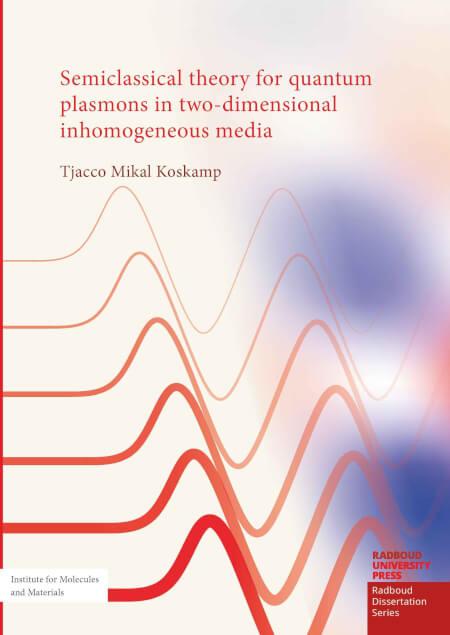Semiclassical theory for quantum plasmons in two-dimensional inhomogeneous media
Keywords:
Plasmonics, Inhomogeneous Systems, Integrated Photonics, Two Dimensional Physics, Analytical TheorySynopsis
The rapid development of two-dimensional materials has spurred significant progress in quantum plasmonics, a field focused on manipulating light at the nanoscale using plasmons. These collective electron oscillations are promising for integrated photonic circuits due to their strong light interaction and ability to confine energy to subwavelength scales. However, predicting their behavior in realistic, inhomogeneous environments poses a significant theoretical challenge, as purely numerical methods are often limited to small system sizes.
This thesis develops a novel semi-analytical theory to describe quantum plasmons in two-dimensional inhomogeneous media. Our approach is based on the semiclassical approximation within the Random Phase Approximation (RPA), which is applicable when the system's parameters vary smoothly over the length scale of the electron wavelength. By separating the in-plane and out-of-plane degrees of freedom, we derive an effective classical Hamiltonian that governs the plasmon dynamics. This derived framework provides an analytical handle on otherwise complex problems, fundamentally highlighting the duality of the semiclassical approximation: on one hand, the dynamics are described by classical trajectories, while on the other, the plasmon's wave-like nature is captured by the induced potential.
The predictive power of this theoretical framework is demonstrated through three key applications. First, we analyze the scattering of plasmons from radially symmetric inhomogeneities, deriving a semiclassical expression for the scattering cross-section to describe how plasmons deflect and interfere. Second, we investigate plasmonic waveguides, identifying two distinct mechanisms for confinement: one based on total internal reflection, analogous to photonic waveguides, and another arising from quasi-localization, where local changes in the dielectric environment modulate the plasmon's amplitude. Finally, we study periodic structures (plasmonic crystals) and derive an analytical condition for the formation of a plasmonic band structure, which functions as an energy filter for propagating plasmons. Collectively, this research provides a comprehensive and fundamental framework for understanding and controlling plasmon dynamics in complex, inhomogeneous environments. It offers a crucial theoretical toolkit for the design and analysis of future plasmonic devices and technologies.

Published
Series
Categories
License

This work is licensed under a Creative Commons Attribution-NonCommercial-NoDerivatives 4.0 International License.

